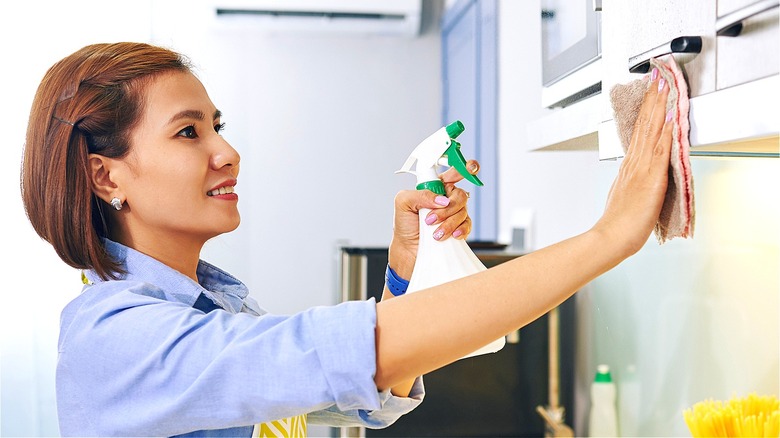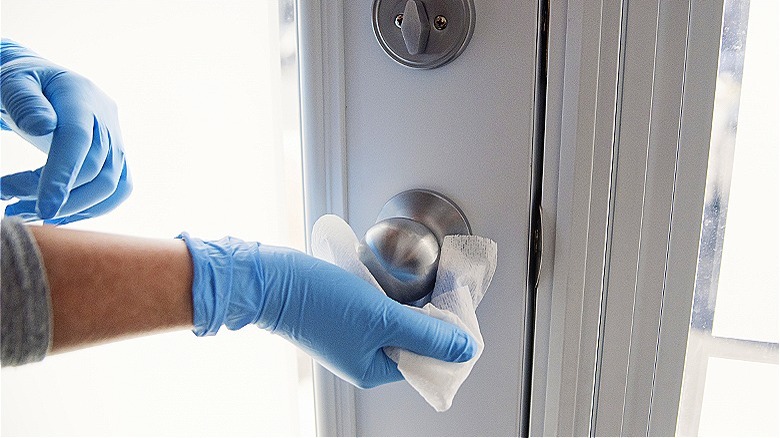The Secret To A Germ-Free Home Is Right On The Label Of Your Favorite Cleaner
Maintaining a clean home that's free of germs is important year-round, but especially when flu season approaches. Even if you regularly use disinfectant products, such as Clorox or Lysol, it's possible you may not be eliminating as many bacteria or as many viruses as you think. In order to clean effectively, you need to abide by the information disinfecting products share on their labels. Specifically, the kill claim and dwell time, which hold the secret to a germ-free home; these explain what bacteria, viruses, and fungi the cleaning product is effective against and how long it takes for the product to work against them.
Note products that claim to sanitize will only lower the number of bacteria present, while disinfecting products eliminate viruses and bacteria. This said, people are often in a hurry when cleaning, trying to get the job done right in as little time as possible, but this could lessen your disinfectant's abilities. Together with the kill claim, disinfecting products also list a dwell time or contact time. This is how long the cleaner needs to be in contact with the surface before drying or being wiped away. In other words, if you don't give a disinfectant enough time to work, it won't work the way it's meant to.
How to disinfect properly
Before disinfecting, it's best to quickly clean the surface of any crumbs, dirt, or dust first. Dr. David Weber, a professor of medicine and epidemiology with the University of North Carolina at Chapel Hill, explained to The New York Times why cleaning first will help a disinfectant do its job. "For a germicide to work, it has to touch the germs," Dr. Weber said. "If you have a layer of grime, the dirt can protect the bacteria. Cleaning has to precede disinfection."
Each disinfecting product, even ones produced by the same company, will have different kill claims and dwell times. If someone in your household is sick with a certain virus, try using a cleaner that specifically targets those germs. By reading the label on the bottle, you'll know how long the disinfectant spray needs to remain on the surface before you wipe it away. This will ensure almost all of the harmful germs and bacteria on the surface die. If the cleaner dries or is wiped up too quickly, it will not eliminate as many germs.
Getting the most out of your disinfectants
For a product to list kill claims, it has to go through testing with the Environmental Protection Agency and prove that it can kill those specific viruses and germs within a certain amount of time. By adhering to contact times listed on the product, you'll ensure that you're killing as many germs as possible, but dwell times can vary within one product. For example, Clorox's Total 360 Disinfectant Cleaner claims to eliminate 99.9% of bacteria within five seconds, but recommends contact times between 30 seconds and two minutes to kill the specific pathogens it mentions. If you're trying to use the product to eliminate mold or fungi, you'll need to leave the Clorox wet on the surface for 10 minutes.
When cleaning with disinfectant wipes, you won't have to wipe the surface for the recommended time, but rather it simply needs to stay wet for the duration of the contact time. You can use one wipe on multiple surfaces in a room, but once the wipe has begun to dry out, it'll no longer be effective.

